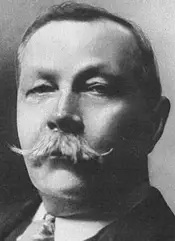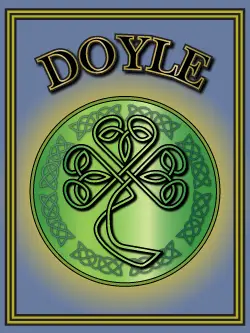Doyle is the 12th most common surname in Ireland. It means ‘dark foreigner’ as Doyles originally descended from Danish Vikings.
The name is derived from the old Irish name ‘Ó Dubhghaill’ which means ‘descendent of Dubhghaill’.
The name Dubhghaill is made up of the words ‘dubh’ which means ‘black’ and ‘gall’ which means ‘stranger’.
Danish had dark hair
The term ‘black’ refers to the hair colour rather than skin colour of the foreign stranger. Danish Vikings were referred to as ‘dark foreigners’ while Norwegian Vikings were ‘fair foreigners’, or ‘Fionnghoill’ because of their lighter coloured hair.
There are a number of Irish and Scottish variations of the name including MacDowell, McDowell, MacDougall and McDougall.
The motto on the Doyle coat of arms says ‘Fortitudine Vincit’ which means ‘He conquers by strength’. Today, Doyles are most prominent in Dublin, Wexford, Wicklow and Carlow.
Vikings arrived in the 8th century
The Vikings first arrived in Ireland around the late 8th century and the early 9th century. They plundered the monasteries for gold and valuables and eventually settled.
They grew stronger and stronger over the centuries and ruled parts of Ireland. Cities and towns like Dublin, Cork, Waterford, Wexford and Limerick grew from the early Viking settlements.
As they grew they might have eventually taken over the country. However, they were stopped in their tracks by the legendary Brian Boru, forefather of the O’Briens.
Dublin Vikings fought against Boru
Throughout his life, Boru’s influence and power had grown. He became King of Thurmond after his brother was killed. Before long he had become the High King of Ireland with all other kings under his command.
The King of Leinster rebelled against Boru and was supported by the Dublin Vikings. They fought for power in the Battle of Clontarf in 1014. Boru had the combined force of all the Gaelic kingdoms as well as some renegade Vikings.
Boru was killed but his army won the battle and the Vikings lost their power in Ireland. Eventually they adopted Gaelic customs and culture. They spoke the language and intermarried with Irish natives.
Famous Doyles throughout the world
There were 125 Doyles in the American army during the War of Independence including Captain John Doyle, Lieutenant Thomas Doyle and Commander William Doyle.
Sarah Elizabeth Doyle was born in Providence, Rhode Island in 1830. She was advocate of women’s rights and thanks to her campaigning, Brown University opened a college for women.
Geraldine Doyle was an American model born in Michigan in 1924. She was featured on posters during World War II along with the slogan ‘We can do it’.

The posters were part of a campaign to boost morale among women workers who had taken on male dominated jobs as the men had enlisted to the army. In the 1980s, the posters started to be used again by campaigners for women’s rights in the workplace.
Sir Arthur Conan Doyle
Sir Arthur Conan Doyle is possibly the best known Doyle. He was a British writer, famous for creating Sherlock Holmes. He was also a fine sportsman and played both football and cricket at high levels.
Other famous writers include Francis Hastings Doyle, Brian Doyle-Murray, Larry Doyle and Roddy Doyle.
Jack Doyle was a heavyweight boxer known as the ‘Gorgeous Gael’. He was also an actor and singer and appeared in two Hollywood movies in the 1930s. The song ‘The Contender’ by Jimmy McCarthy was written about Jack Doyle.
